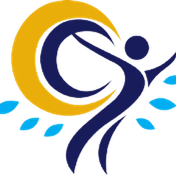 Balance disorders are characterized by conditions that make you feel unsteady while you sit, stand, or lie down. These disorders are caused by head injuries, neurological conditions, low/high blood pressure, and certain medications. To treat balance disorders, physical therapy(opens in a new tab) is often recommended. Likewise, here are the different balance disorders that PT can address:
Balance disorders are characterized by conditions that make you feel unsteady while you sit, stand, or lie down. These disorders are caused by head injuries, neurological conditions, low/high blood pressure, and certain medications. To treat balance disorders, physical therapy(opens in a new tab) is often recommended. Likewise, here are the different balance disorders that PT can address:
- Vestibular Disorders This is a type of balance disorder(opens in a new tab) that causes symptoms like fatigue, nausea, lightheadedness, and sensations that the ground is moving. Vestibular physiotherapy(opens in a new tab) focuses on the nervous system to reduce or manage these symptoms. The goal of PT is to help the brain learn to use other senses like vision to compensate for deficiencies in the vestibular system.
- Peripheral Neuropathy This occurs when the nerves that carry messages to and from the brain or spine are damaged. This disorder causes muscle weakness, poor balance, and numbness. A physical therapist(opens in a new tab) can recommend exercises that focus on aerobics, flexibility, and stability, as well as splints and other mobility aids to help you maintain a proper range of motion and balance.
- Reduced Strength in Lower Extremities Loss of strength in the lower extremities causes balance or gait issues. This is often caused by injury, aging, and living a sedentary lifestyle. PT helps by restoring balance and gait through exercises and intervention. Examples of exercises your therapist may recommend include assisted or unassisted chair leg exercises and tightrope walks.
Improve your balance with Outcomes Therapy. We offer physical, speech, and occupational therapy(opens in a new tab) to aid you in your recovery. Regain functionality and independence – get in touch(opens in a new tab) with us to set an appointment. { '@context': 'http://schema.org', '@type': 'NewsArticle', 'mainEntityOfPage': {'@type': 'WebPage','@id': 'https://www.outcomeshometherapy.com/pt-for-balance-disorders-a-path-to-improved-balance' }, 'headline': 'PT for Balance Disorders: A Path to Improved Balance', 'image': ['https://www.outcomeshometherapy.com/wp-content/uploads/2023/10/pt-for-balance-disorders-a-path-to-improved-balance.jpg','https://www.outcomeshometherapy.com/wp-content/uploads/2023/10/pt-for-balance-disorders-a-path-to-improved-balance-300x198.jpg','https://www.outcomeshometherapy.com/wp-content/uploads/2023/10/pt-for-balance-disorders-a-path-to-improved-balance-150x150.jpg' ], 'datePublished': '2023-10-27', 'dateModified': '2023-10-27', 'author': {'@type': 'Person','name': 'Louise Savoie' }, 'publisher': {'@type': 'Organization','name': 'Outcomes Therapy','logo': { '@type': 'ImageObject', 'url': 'https://www.outcomeshometherapy.com/wp-content/themes/outcomestherapy/images/WEBP/main-logo.webp '} }, 'description': 'To treat balance disorders, physical therapy is often recommended. Likewise, here are the different balance disorders that PT can address.'}

